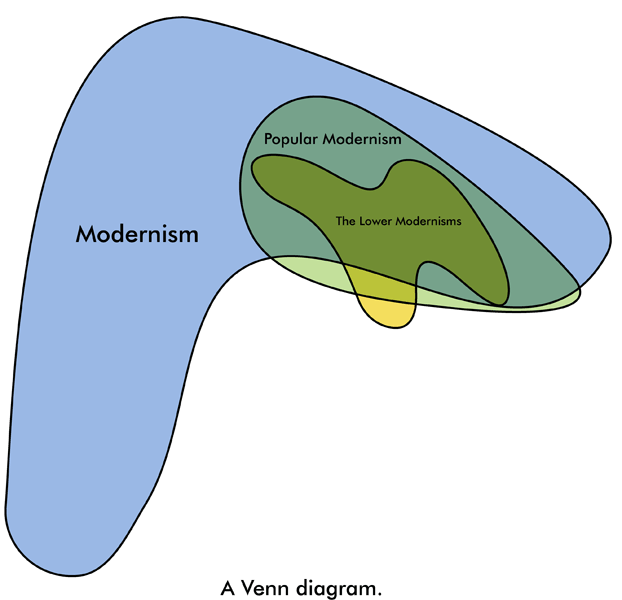Editor’s Note: Today’s post, continuing the dialog about the significance of the Lower Modernisms and contextualizing them as a subset of Popular Modernism, was contributed by Russ Holthouse. Russ is a Los Angeles-based architect, a fellow enthusiast and student of Modernism, and an old friend of mine. -JAB
I think what you’ve described as “The Lower Modernisms” comprise the bulk of what I consider Popular Modernism (“PopMod”?); the real value of PopMod is that it is the most important, most identifiable – but at the same time largely neglected (as such) – component of Los Angeles’s architectural legacy.

Los Angeles is unique in that it’s the only metropolis whose brand of architecture is both modern and predominantly populist; that is, modernism directed to, and for, the everyman – largely built, paid for and used by the middle classes. The Popular Modern includes all, or most, of the so-called “mid-mod” furniture and industrial design now enjoying a long running resurgence, the Case Study House program and the whole of the Arts & Architecture project, Googie ‘style’, the oft-disparaged ‘martini-modern’ (exemplified by the leisure architecture of Palm Springs and Las Vegas), and the bulk of the output of any number of celebrated regional modernists. Although it is never really addressed as PopMod, most of this stuff has already been mined for every last iota of content and meaning – see all of the books published in recent years on Schindler, Neutra, Koenig, Elwood, Ain, Lautner, the Eameses, Los Angeles Modernism, Palm Springs Modernism, West Coast Modernism, the work of Julius Shulman, and so on. With books like Googie (1986, 2004) and Forgotten Modern (2007), Alan Hess has attempted to drag some of the major stragglers into the canon; sadly, some of the discipline’s virtuoso practitioners, like Allyn Morris and Richard Dorman, remain neglected.
To the point of this blog, I still think that legitimately Lower Modern work comprises a large percentage, and perhaps a significant majority of the PopMod – in terms of shear quantity of built work. LoMo is important because it is the overlooked and disrespected majority of PopMod, and PopMod is LA’s great contribution to the architectural canon. Without understanding the importance of LoMo, it’s harder to see PopMod as the super-group of various movements and styles that it is. To address the question with which you close blog post #1, I think this is why the Lower Modernisms are worth thinking about.
Leave a Reply